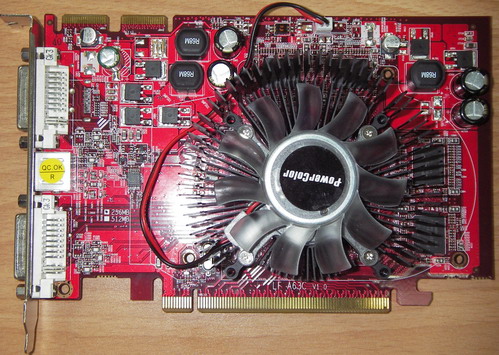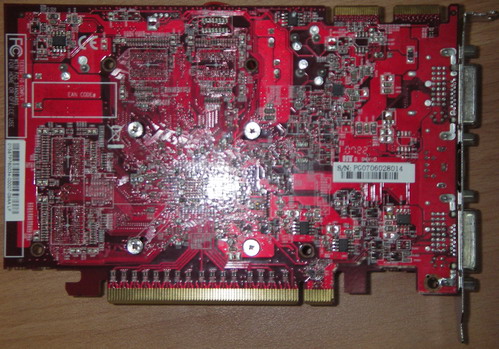
Will it beat the GeForce 8600 GT?
So here it is, the heavily delayed Radeon HD 2600 XT from AMD, but the question that we have all been wondering about is if it is any good. Well, you’re going to have to wait a little bit longer for the answer to that question, but let’s start with a closer look at the specifications of this puppy. We tested a card from PowerColor and as all board partners are free to do their own designs on these cards, expect to see slightly different looking cards.
This first generation from PowerColor follows the reference design, it is not quite the same, although you can see the outline for the reference cooler on the board, but PowerColor has gone with a different cooling solution. The cooler PowerColor has used is somewhat similar to a Zalman cooler, but with less fins. Judging by how cool the card was running during testing, it seems to do more than an adequate job.

The card doesn’t feature an additional power connector, so there might be a limitation on how far you can overclock this card. Due to our very limited time to play with this card, we only took a pot shot at overclocking it, but more on this later on. The default clocks speeds for the PowerColor card was 800MHz for the GPU and 700MHz for the GDDR3 memory or 1,400MHz effectively. Nothing out of the ordinary here and PowerColor used 1.4ns memory modules from Hynix. This means that there isn’t much headroom in terms of overclocking, although this will as always depend on how lucky you are.
The Radeon HD 2600 XT GPU has 120 stream processors and sadly a 128-bit memory interface, but this information had been widely available for quite some time. It also has eight texture units and four ROPs, although AMD calls these render back-ends. The core is made up of some 390 million transistors, some 310 million short of a Radeon HD 2900 XT. It will be interesting to see how overclockable these parts are, as at 65nm the Radeon HD 2600 XT should run very cool.
The PowerColor card features two DVI ports and a TV-out connector as well as two hardware CrossFire connectors on the top of the PCB. Apart from this there’s very little that catches the eye. It looks like a 512MB version will be out soon as well, as the card has a tick box for 512MB and four empty memory spaces on the rear of the card. 512MB cards weren’t on AMD’s roadmap, but as these cards are built by the partners, ATI doesn’t have too much say in what can or can’t be done.

As with the Radeon HD 2900 XT the HD 2600 XT supports HDMI out via a DVI to HDMI dongle and the HD 2600 XT has the same audio drivers. One difference here is that the HD 2600 and HD 2400 series does UVD in hardware instead of in software as per the HD 2900 XT. This is something we’ll look at in the future, as we didn’t have any high definition content available to us at the time of testing.
